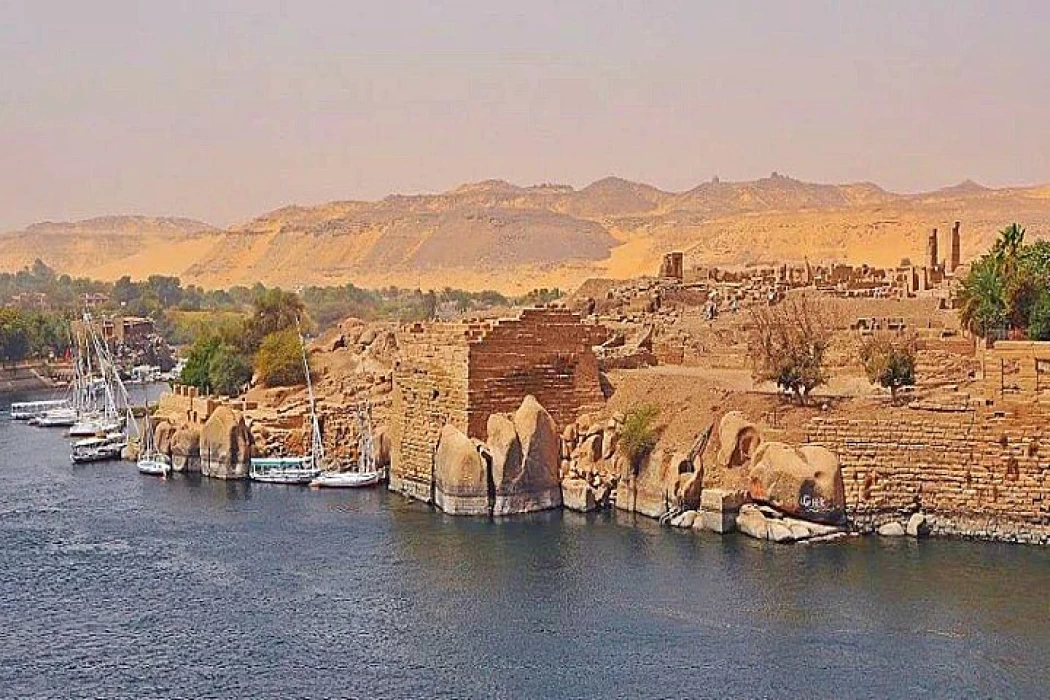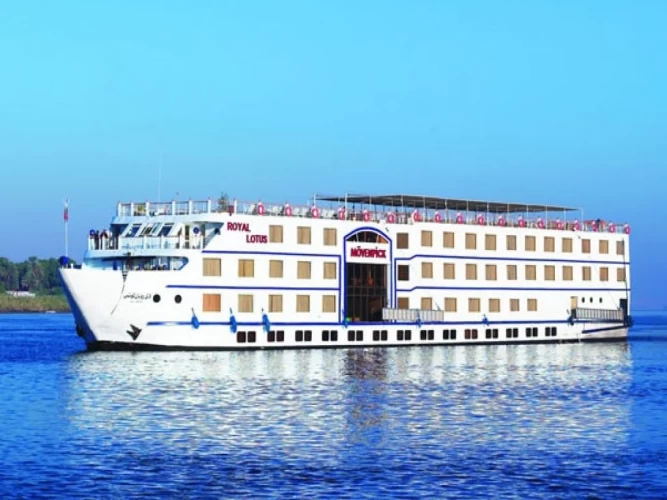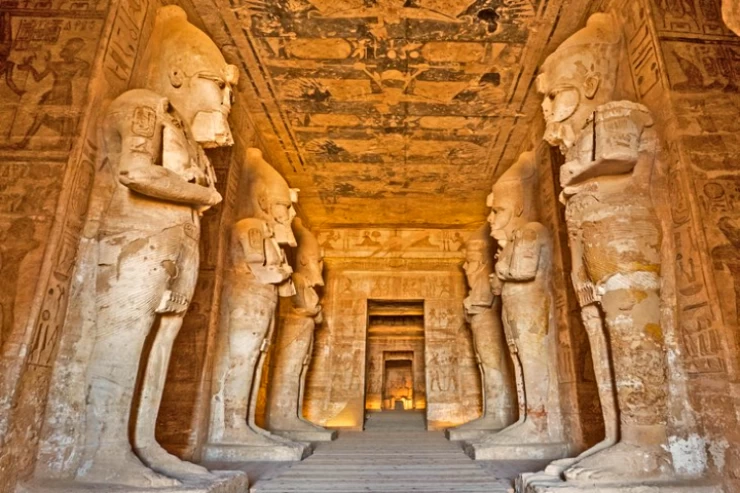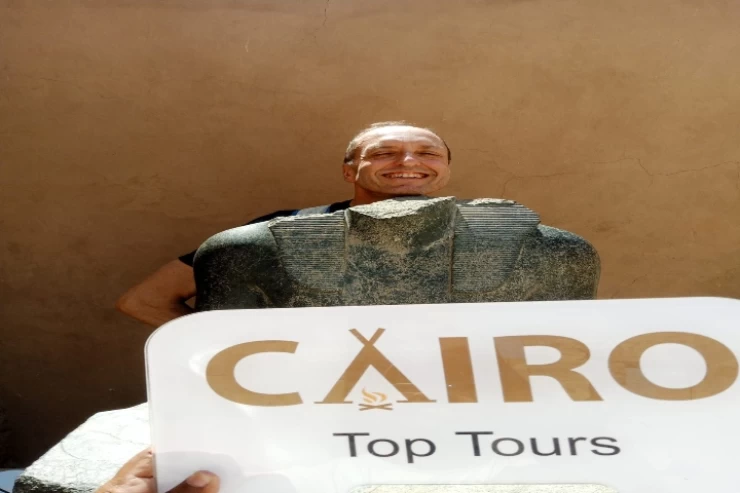
Elephantine Island Temple in Aswan
Elephantine Island in Aswan
In the religion of the ancient Egyptians, Elephantine was the home of Khnum, the ram-headed god of waterfalls, who ruled and guarded the Nile from the caves under the island. He was one of the late triad of Egyptian deities worshipped here.
The ancient town of Abu, located at the island's southern end, was once a trading and economic center. The island's name also reflects its former role in the ivory trade as caravans from the south of Egypt unloaded their goods to be transported north on the river. From this Pharaonic-era settlement, the late Khnum Temple and other partially excavated monuments spread over the rest of the island remained.
Some people think of the island's name as having any large wild mammals anywhere on it. But the reason for calling it this name is that it comes from the large gray granite rocks at its southern end, which some believe to be like a group of elephants standing in the water. The island offers a variety of Aswan attractions that make it difficult to miss on any Nile cruise from Aswan to Luxor.
The island has the fabulous Aswan Museum as well, the palm forests cover 2 villages from Nubia that usually receive tourists and stunning landscapes on the river. There is also a luxury hotel, Movenpick Aswan, located at its northern end. Elephantine Island can be approached by means of a small boat or a felucca ride on the Nile in Aswan which could be hired along the shore.
The Temples of Elephantine Island
Temples and cemeteries are located at the southern end of the island, including a sanctuary of the goddess Satet, who was the protector of Elephantine. A sanctuary of the goddess Satet was founded in the 2nd dynasty and the temple was rebuilt here during the Middle and the New Kingdom, as well as during the Ptolemaic era.
Information about the Temple of Khnum at Esna's past
Khnum, the ram-headed god whose attributes included creation, fertility, and the annual flooding of the Nile, was worshipped in Esna, also known in antiquity as Latopolis. On his potter's wheel, Khnum was reputed to have molded humankind from clay.
The Elephantine papyri are Aramaic records of the Aramaic and Jewish communities of Elephantine, as well as documenting a 6th century B.C. Jewish community, possibly mercenary, that maintained separate temples and polytheistic beliefs, possibly coexisting with those of Khnum.
The Temple of Set
The first temple built on the island was the Temple of Satet around 3000 BC; the temple went under renovation and modifications over the next 3000 years.
The southern tip of the island, once of strategic importance and great fame, has been transformed into a major tourist attraction and a huge open-air museum with stairs and paths.
The temple of Khnum
The ruins of a temple of Khnum, the god of the battering ram associated with the first cataract of the Nile, are also found on the island. The main terrace of this temple dating back to the 30th dynasty remains as well as a monumental portal. Together with Anuket, goddess of the island of Sehel, these three gods formed the triad of the Elephantine area.

Temple of Khnum at Esna
The Ptolemaic sanctuary of Kalabsha
Dedicated to the Nubian god Mandoli and saved from Nubia, was rebuilt at the southern end of the island. Nearby, a statue of an elephant, the heraldic emblem of the area (found during the excavations of Aswan), has been placed.
Visit the Charming Island Temple on Elephantine in Aswan.
Tucked deep inside the Nile River, Elephantine island in Aswan is well known for numerous gifts of history packed with culture and breathtaking beauty. Bearing the reputation of ancient temples, rich greenery, and splendid sagas, it offers travel-tied christenings to anyone who wishes to tie and know more of that past that Egypt has got to offer.
The Historical Importance
The name Elephantine comes from the Greek word that means elephant and since it was the first cataract really situated at a good point in terms of trade and military posts in ancient Egypt, it was quite important. It was already in existence as a post between Nubia and Egypt regarding its coast. There was also a large population of actual Egyptians and Nubians who had shrines to Khnum, the ram-headed God of creation and the source of the Nile.
The most famous archaeological site on this island is the Temple of Khnum and it dates from the time of the Third Dynasty but it is very likely to have undergone extensions in the course of the New Kingdom and the Greco-Roman age. Today, the remnants of the temple can testify to the worship ancient Egyptians gave to this deity whom they believed controlled the floodings of the Nile every year.
Architectural Marvels
Beating back through time exploring ruins in this temple is like traveling into a history book. The temple complex features:
Granite gateways and pylons, showcasing the exquisite craftsmanship of ancient artisans.Hieroglyphic inscriptions and reliefs depicting scenes of rituals and offerings.Nilometers, ancient measuring devices used to gauge the Nile's water levels, highlighting the island's importance in agricultural planning.Cultural Insights
The daily culture shows inside the temple and island.










-webp.webp)







